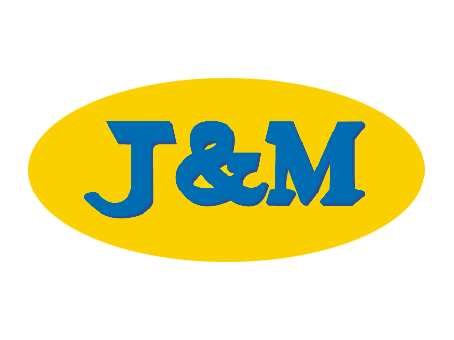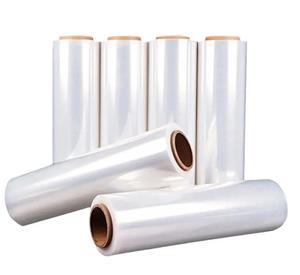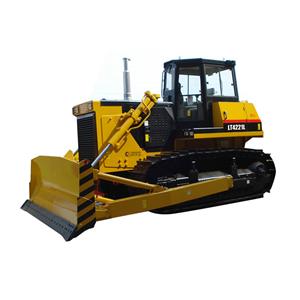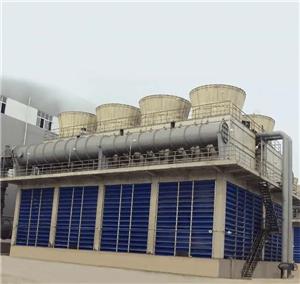-
1.How to prevent Cavitation Troubles in Hydraulic Cylinders of Construction Machinery
When we are repairing hydraulic cylinders of construction machinery, we can often see honeycomb-shaped cavities on the inner wall, piston or piston rod surface of the hydraulic cylinder, which are all caused by cavitation. The hazard of cavitation in the hydraulic cylinder is considerable, it will cause the mating surface to become black, and even the support ring and sealing ring may be burnt, which will cause internal leakage of the hydraulic cylinder. When cavitation and other types of corrosion work together, it will accelerate the corrosion rate of the main parts of the hydraulic cylinder several times or even dozens of times, which will seriously affect the normal use of construction machinery. Therefore, targeted prevention of cavitation in hydraulic cylinders is very necessary. 1. The main cause of cavitation 1.1 Essential analysis of cavitation Cavitation occurs mainly because a certain amount of air is mixed into the oil between the piston and the guide sleeve during the working process of the hydraulic cylinder. With the gradual increase in pressure, the gas in the oil will turn into bubbles. When the pressure rises to a certain limit, these bubbles will burst under the action of high pressure, thereby quickly acting on the high temperature and high pressure gas. On the surface of the part, it causes cavitation in the hydraulic cylinder, causing corrosive damage to the part. 1.2 Unqualified hydraulic oil quality leads to cavitation Ensuring the quality of hydraulic oil is an important factor in preventing cavitation. If the oil has poor anti-foaming properties, it is easy to produce foam, which can lead to cavitation. Secondly, if the frequency of oil pressure changes is too fast or too high, it will directly cause the formation of bubbles and accelerate the bursting speed of bubbles. Tests have proved that the rate of cavitation in parts with high frequency of pressure changes will increase. For example, at the inlet and return ports of hydraulic cylinders, due to the relatively high frequency of pressure changes, the degree of cavitation is relatively higher than other parts. In addition, overheating of the oil will increase the chance of cavitation. 1.3 Improper manufacturing and maintenance lead to cavitation Because the hydraulic system is not fully exhausted during assembly or maintenance, there is gas in the system, which can cause cavitation under the action of high temperature and high pressure. 1.4 The quality of the coolant causes cavitation When the coolant contains corrosive media, such as various acid radical ions, oxidants, etc., it is prone to chemical and electrochemical corrosion. Under their combined action, the speed of cavitation will also be accelerated; if the cooling system is well maintained, it can be Prevent the occurrence of cavitation. For example, if the pressure cover of the radiator of the cooling system is well maintained, the pressure of the radiator's coolant can always be higher than the vapor pressure, thereby preventing cavitation. Another example is the thermostat of the cooling system; a thermostat with good performance can keep the coolant in a suitable temperature range, and can reduce the energy released when the bubble bursts. 2. Measures to prevent cavitation Although there are many causes of cavitation, as long as necessary measures are taken to actively prevent it, cavitation can still be avoided. In the following, we will talk about the preventive measures that should be taken in view of the causes of cavitation. 2.1 Strictly check the selection of hydraulic oil The hydraulic oil is selected strictly in accordance with the oil standard. The selection of good quality hydraulic oil can effectively prevent air bubbles from appearing in the hydraulic system during the working process. When selecting oil, you should choose according to the lowest temperature in different regions, and fill the hydraulic oil according to the standard of the dipstick. At the same time, keep the hydraulic system clean (when filling the hydraulic oil, prevent moisture and other impurities from being brought into ), always check the oil quality, oil level and oil color of the hydraulic oil. If you find blisters, bubbles, or the oil turns milky white in the hydraulic oil, you should carefully find the source of the air in the oil and eliminate it in time. 2.2 Prevent excessive oil temperature and reduce hydraulic shock Reasonable design of the heat dissipation system to prevent the oil temperature from being too high is the key to keeping the hydraulic oil temperature normal. If an abnormality occurs, the cause should be found and eliminated in time. When operating the hydraulic joystick and distribution valve, it is necessary to strive for stability, not too fast or too much, and it is not suitable to increase the engine throttle frequently to minimize the impact of the hydraulic oil on the hydraulic components. At the same time, the cooling system should be maintained in time to keep the temperature of the cooling system within an appropriate range to reduce the energy released when the bubble bursts. While not affecting the normal circulation of the coolant, a certain amount of anti-corrosion additives can be appropriately added to inhibit rust. 2.3 Maintain the normal clearance of the joint surface of each hydraulic component When manufacturing or repairing the main parts of hydraulic cylinders (such as cylinder block, piston rod, etc.), they should be assembled according to the lower limit of the assembly size tolerance. Practice has proved that this can well reduce the occurrence of cavitation. If the hydraulic components have already experienced cavitation, the metallographic sandpaper polishing technology can only be used to remove the pitting and surface carbon of the cavitation. Do not use ordinary fine sandpaper for polishing. 2.4 Pay attention to exhaust during maintenance After the hydraulic cylinder is repaired, the hydraulic system should be operated smoothly for a certain period of time so that the hydraulic oil in the hydraulic system can be fully circulated; if necessary, the oil inlet pipe (or return pipe) of the hydraulic cylinder can be disassembled to make the hydraulic oil overflow , In order to achieve the effect of a single hydraulic cylinder exhaust.
-
2.How to maintain the engine cooling system?
After the cooling system works for a certain period of time, various dirt will inevitably form inside. There are many differences in the types of dirt due to different factors such as use conditions and maintenance. For most vehicles, water is usually used, and antifreeze is used only in low temperature conditions in winter. In this case, rust and scale-based dirt are prone to appear; for vehicles that use antifreeze for a long time, scales will appear. And gel-based dirt. Other components of dirt include: ①Acid formed by degradation. For example, failed corrosion inhibitors, oxidized ethylene or propylene glycol, etc. ②Heavy metals. ③Hard water impurities. ④ Physical impurities. For example, foreign materials (dust, sand, etc.) and precipitated additives. ⑤ Electrolyte. There are three main failures of the engine cooling system: (1) The engine water temperature is too high or even boiling. (2) The engine water temperature is too low. (3) The cooling system leaks. There are many reasons for the overheating of the engine. The most common reason is the accumulation of dirt, scale, gel and other dirt in the cooling system, which blocks the water channel and reduces the heat dissipation effect of the cooling system. In the past, the usual way to troubleshoot this type of failure was to disassemble the water tank for replacement, but the facts have proved that the situation of many cars has not been improved as a result. Engine cooling system leakage mainly includes water tank leakage, upper and lower water pipe leakage and cylinder gasket leakage. Disassembly-free solution for major failures of cooling system 1. Solutions to high temperature faults For the engine overheating failure, especially the problem caused by excessive dirt, the cooling system cleaning agent can be used to deal with the problem with special equipment. 1.1 Selection of cleaning agent When choosing a cleaning agent, there are three principles for reference: 1.1.1For most precipitation and corrosion, it is better to use a slightly acidic cleaning agent. 1.1.2If the gel is not hard, it can be cleaned with alkaline or non-corrosive cleaners (acid is better, but alkaline cleaners can achieve the effect). 1.1.3For oily impurities in the cooling system, acid cleaning agents are used to complete this task. Comprehensive consideration of the above three principles, plus the dirt in the domestic automobile cooling system in China is mainly precipitated, oily impurities and rust, using acidic cleaning products (for example, the 60119# cooling system high-efficiency cleaning agent launched by the United States Willish ) In order to fully meet the requirements of the current Chinese market. At present, most of the cooling system cleaning agents in the market are alkaline, so it can only meet the needs of a small number of cars. 1.2 Processing method After connecting the equipment to the car, add the product to the engine cooling system to ensure that it works for about 30 minutes when it reaches the normal operating temperature, and then use the equipment to completely replace the old antifreeze. 2. Solution to leakage failure 2.1 Situation analysis There are two main types of leakage in the water tank, one is granular and the other is strip. The leakage of upper and lower water pipes is mainly due to cracking and aging after the damage is eliminated; the cylinder head gasket is mainly caused by water leakage caused by various reasons, and water entering the oil circuit. 2.2 How to deal with water tank leakage There are currently two categories of products that prevent water tank leakage in the Chinese market. In terms of working principle, one is a plugging agent and the other is a stopper. What is the difference between them? The plugging agent product is a chemical substance with properties similar to fillers, which can block all the leaking parts. The anti-leak agent product is some plant fiber, which uses surface tension to block the leakage, and then fixes it in the leakage position under the action of the curing agent to ensure that there will be no leakage in the future. For the leakage of the water tank, you can directly add the water tank anti-leak agent product, and do not add the leak-stopping agent product.
-
3.How to prevent the high oil temperature of hydraulic torque converter of loader?
During the operation of a loader (belonging to the ZL series), the oil temperature of the torque converter continues to exceed 120°C and the following phenomena occur, such as oily smoke from the fuel filler, weak drive, speed reduction, abnormal noise of the variable-speed pump, and variable-speed pressure Too low. Too high oil temperature can easily cause the oil to oxidize and deteriorate, reduce its viscosity, reduce transmission and lubrication functions, accelerate internal leakage, component wear, rubber seal failure, and even cause mechanical accidents. The main reasons for the high oil temperature of the torque converter are: the use of unqualified hydraulic transmission oil, the decrease of oil viscosity or oxidation causes the oil transmission and lubrication ability to decrease; the filter screen is blocked; the rotating oil seal fails; the connecting bolts are loose; Blockage of the device and pipeline; long-term overload work; severe wear of the friction plate; slipping of the overrunning clutch; failure of the cooling system, etc. The measures to prevent excessive oil temperature in the torque converter are as follows: 1. Reasonable selection and use of hydraulic transmission oil For example, the oil used for the torque converter of XGMA ZL40 and ZL50 loaders is No. 22 gas turbine oil (SYB1201-60HU-22); the oil used for LIUGONG models is AF8 (namely No. 8) hydraulic transmission oil. The hydraulic transmission oil should also be selected according to the temperature characteristics of the construction season, so that it has suitable oxidation resistance, viscosity and viscosity-temperature characteristics, and quantitatively filled. The filling capacity of the torque converter fuel tank of XGMA ZL40 and ZL50 loaders is 45L, and the filling capacity of the torque converter fuel tank of the Liugong model is 42L and 45L. 2. strengthen maintenance For example, during the construction of a ZL50 loader, the oil temperature of the torque converter continued to exceed 120°C, accompanied by abnormal noise of the variable speed pump. It was found that the filter screen was blocked and the oil suction resistance of the variable speed pump increased, resulting in increased oil absorption energy consumption and transmission oil. Insufficient supply caused the oil temperature of the torque converter to rise. At the same time, a hose was found and the fault was rectified. For loaders equipped with a fine oil filter, the fine oil filter must be checked regularly to ensure smoothness. Also check the front and rear axle output shaft oil seals and replace them in time to prevent oil leakage. Always check the engine cooling water volume and the tension of the fan tape to ensure that there is sufficient cooling water and ventilation. 3. pay attention to the degree of part wear and assembly quality To maintain a good technical condition of the variable speed pump. When the pump body is touched by hand and the temperature is much higher than the box body temperature, it should be overhauled. The gap between the end faces of the two gears and the pump cover should be 0.150~0.200mm, and the difference between the width of a pair of gears should not be more than 30mm in the maximum width (ZL50 LIUGONG loader), and the surface of the parts should not have obvious Scratches and grooves. The gears must be assembled in pairs and kept in good contact, operate flexibly, and must not jam. It is necessary to prevent the gear friction and internal leakage throttling during the operation of the variable speed pump from causing the oil temperature to rise. When overhauling the transmission, focus on checking the friction plate. There should be no peeling, cracks, adhered wear debris and dust, and the friction plate should be firmly bonded to the steel plate. Secondly, pay attention to detecting the thickness of the main and driven friction plates. The maximum wear of the friction plates of the direct gear drive plate assembly of ZL50 loader transmission and the reverse gear and I gear drive plate assembly is 0.300mm. If the friction plate is too worn, it is easy to slip, and the friction plate is too thick or the assembly gap is too small to cause interference. It is necessary to maintain a good matching clearance of the variable speed valve. If the clearance is too large, it is easy to squeeze out the pressure oil from the gap, causing throttling loss and increasing the oil temperature. The pressure adjustment of the variable speed valve should be correct to prevent the low piston thrust caused by the low variable speed pressure, the main and follower friction plates are not tightly engaged and slip, and the friction heat causes the oil temperature to rise. After the torque converter is assembled, the rotating parts should be able to rotate freely, and the turbine group should be rotated by hand. The first and second turbines should rotate flexibly and without jamming to prevent collision and interference when the components are rotating, which may cause friction, heat, and oil. Temperature rise and power loss. In addition, each oil seal and sealing ring must not be damaged, and the oil seal ring must not be stuck. If the bearing is damaged, it should be replaced in time to prevent friction caused by the deflection of the moving part due to the damage of the bearing. Check whether the overrunning clutch is slipping and jamming, and prevent it from changing the direction of the fluid flow and causing mixed flow to cause the oil friction to heat up. And maintain normal oil pressure at the inlet and outlet of the torque converter. In the oil-filled no-load test of Liugong’s ZL50 loader twin-turbo hydraulic torque converter, at an input speed of 1500r/min and an oil temperature of 80~100℃ for 20min, the inlet oil pressure of the torque converter should be kept at 0.549MPa, the outlet oil pressure should be maintained at 0.280~0.450MPa, and the oil drainage volume should not exceed 1.5L/min. 4. Prevent the influence of man-made and environmental factors Do not avoid long-term overload operation. When there is a lot of dust on the construction site, flush it with a high-pressure water gun in time.
-
4.What kind of "Small holes" cannot be blocked on construction machinery ?
The following "small holes" on construction machinery cannot be blocked at all: (1) Water pump overflow hole and water hole. An overflow hole is formed at the shaft of the water pump. One is to observe the leakage of the water pump, and the other is that the leakage of the water pump can release the hole into the sky. If it is blocked, the leaking water can leave the pump hole and affect the lubrication, leading to early damage to the bearing and the water shaft. Or water seal. (2) The oil drain hole of the pump pump output oil pump body is used to make the pump body in the pump body pump oil directly. The blockage will cause some diesel pumps to fail to pump out the oil pump body but the pump oil pump of the oil pump body. The bottom shell skid, resulting in deterioration of gloss and damage to the parts due to poor lubrication. (3) The blockage will cause the diesel engine to start. (4) Diesel engine fuel injector oil hole. Once blocked, the drained oil cannot return to the fuel tank, the pressure in the oil return channel is high, the fuel injector oil becomes higher, and the fuel injection time changes, which can easily lead to oil jam. (5) Fuel injection pump respirator. After being blocked, it is easy to deteriorate and cause poor lubrication. (6) Each hole used for the diesel tank cover prevents normal fuel supply when the oil level drops. (7) The crankcase shaft and the oil port cover hole bend away from the trouble of entering the axle box from the oxygen channel. If it is blocked, it will cause ink leakage and oxidation. (8) Diesel engine oil hole, like rocking door rocker arm, rocker arm, and air push rod. If blocked, it will accelerate the maturity of the parts; blockage of the oil hole of the memory timing gear will lead to poor wear and aging, pale appearance, and strikes. Emitting a strange mouth; the centrifugal cosmetic fine filter is directed to two non-deteriorating objects on the body, such as stopping the rotation of the ingredients or slowing the speed, causing the color filter to lose its function, prematurely deteriorating the oil, and accelerating the mechanism. (9) There are air particles in the exhaust hole of the air filter. For example, the dirt will enter the first-level filter along with it, or even enter the air filter, accelerating the parts and causing dust power. (10) Many oil return holes in the inner groove of the oil ring of the diesel engine piston ring can promote the oil filter scraped from the wall to flow back to the box shaft. Blocking will cause a large amount of oil to enter the combustion endogenous, carbon deposits, and cause malfunctions. (11) The oil cooler, full water and drain holes are used to drain the cooling water everywhere. Blocking will cause the cooling water to fail. In winter, the cooler is easy to crack, water freezing and hobbies (common) are frozen cracked corn cooling器), resulting in losses. (12) Diesel engine auxiliary water drain cover hole. After clogging, there will be problems with the cover hole. After being blocked, the pressure of the secondary water source cannot be established, causing the cooling of the secondary water internal difference to be unable to flow into the main again, causing the cooling liquid level to be too low and affecting the heat dissipation effect. (13) Reservoir and liquid plug hole. Exit to prevent accidents from accidents caused by excessive gas accumulation. (14) The small holes in the hydraulic oil tank, rabbit, torque converter, hydraulic pump transmission box, etc., ensure that the altitude of the tank is connected, balance the internal pressure, and leave the outside air to prevent rapid temperature rise and premature deterioration of the fluid in the tank. (15) The hole on the main environmental protection device shell prevents excessive oil and air in the weather hood, and prevents premature damage to parts exposed to sunlight. (16) The master cylinder pump cover avoids the hole liquid, the master cylinder oil return hole and the auxiliary hole, which can ensure the replenishment and circulation of the brake, so that the brake is restored completely, and the hole invades the balance in the passage. Use finer dredging to ensure clean and unobstructed. Once blocked, it will cause unobstructed "biting", oil leakage of the master pump and other failures. (17) The small holes for the main clutch and steering to catch the eyeballs are used to quickly remove from various places. If blockage occurs, excessive oil will enter the surface of the friction plate, thereby attracting the clutch to hit, and the power sliding transmission is unstable.




